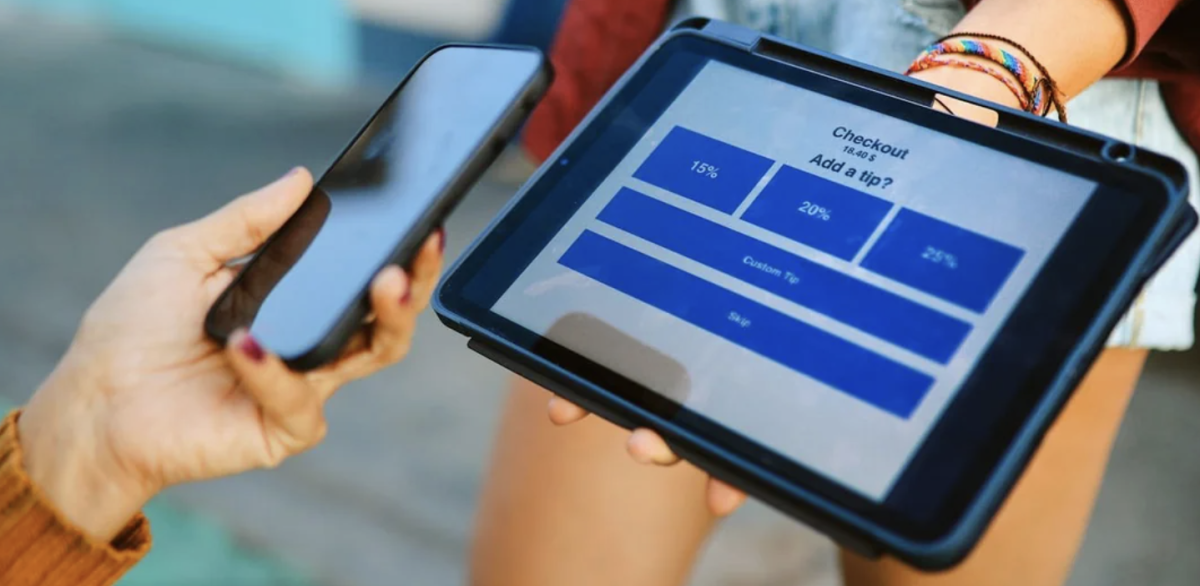
If you’ve grabbed coffee, ordered takeout, or dined out recently, you may have noticed a change in tipping. The humble tip jar has gone digital—and it’s become a lot pushier. Many customers feel pressured to tip more than ever, even for simple orders. Some Americans are now finding creative ways to navigate these new tipping tactics.
The rise of the “mandatory” tip
Let’s set the scene: You’re craving a pizza, so you hop online to place a simple pickup order. You expect to pay for your pie, maybe leave a tip if you’re feeling generous. But when you reach the checkout screen, you’re greeted with a not-so-friendly reminder: “Don’t forget a tip!” The options? 15%, 20%, or a whopping 35%. There’s a “custom” box, but—surprise! If you try to enter $0, the website flashes a red warning: “Please enter a valid tip amount.” No tip, no pizza.
One frustrated customer vented online: “How can it be a tip when I don’t have a choice?” Their solution? They took their business elsewhere.
Tipping has shifted from gratitude to obligation
It wasn’t so long ago that 15% was the gold standard for tipping decent service. Now, 20% is the new baseline, and anything less can earn you a frosty glare—or worse, a side of guilt.
In fact, a recent survey found that three-quarters of Americans think tipping culture has spiraled out of control. Two out of three admit to “guilt tipping”—leaving a gratuity not out of appreciation, but because the payment screen made them feel they had to.
And it’s not just restaurants. “Tipflation” has crept into coffee shops, takeout counters, food trucks, and even self-service kiosks. Some hotels, including big names like Marriott and Hyatt, have started prompting guests for tips at the front desk—before you’ve even seen your room! Traditionally, tips were reserved for bellhops or housekeeping, but now, even checking in can come with a digital nudge for extra cash.
Also read: You won’t believe these 13 everyday things you’re now paying for—they used to be free!
Why digital tipping keeps growing
The answer is a mix of economics and technology. As wages stagnate and the cost of living rises, businesses are seeking ways to increase staff pay without raising menu prices.
Enter the digital tip prompt: a quick, easy way to shift the burden onto customers. Payment tablets and apps make it simple to suggest (or demand) higher tips, and many people feel too awkward to say no, especially when the cashier is watching.
Foreign visitors are often baffled by this uniquely American phenomenon. As one British expat put it, “What the hell is tipping? I don’t get it. Tipping here, tipping this, tip tip tip. Why do I have to pay you?” For many, it’s a culture shock that never quite wears off.
Also read: 7 restaurant chains still serving big portions at small prices
How savvy Americans push back
But here’s the good news: Americans are nothing if not resourceful. When faced with forced tipping, clever diners have found ways to push back:
1. Workarounds
Some online users suggest entering a tiny amount (like $0.01 or $0.001) in the custom tip box to bypass the system. Others get technical, removing the “required” field in the website’s code (though that’s a bit advanced for most older adults!).
2. Vote with Your Wallet
The simplest solution? Take your business elsewhere. If a restaurant or hotel insists on a mandatory tip, many customers simply walk away.
3. Speak Up
Don’t be afraid to ask for help or clarification. If you’re prompted for a tip in a situation where it doesn’t make sense, ask the staff or manager. Sometimes, the prompt is just a default setting, and they can help you skip it.
4. Leave Feedback
Use online reviews or comment cards to let businesses know how you feel about aggressive tipping tactics. If enough customers speak up, companies may rethink their approach.
Savvy users of the online forum offered advice to others facing this dilemma:
Example Scenario
- ”Try 0.001,” one comment read.
- “If it's just HTML validation, I'll just try to bypass it completely by removing the 'required' attribute on the input,” another offered a more complex solution.
- ”I would ask them to assist you so they could go through the whole awkwardness,” one wrote.
- ”Give them your two cents,” another joked.
- ”Every response on this comment is far more effort than it deserves: abandon transaction, go elsewhere,” a user suggested.
Tipping was once a way to reward good service. Now, it can feel like a toll just to get your food or check into your hotel. Some argue that higher tips help workers make ends meet, while others say it’s time for businesses to pay fair wages and stop putting the onus on customers.
Read next:
- Eating out frustrations grow: What’s driving diners away from restaurants?
- Don’t ignore that $4.19 charge—Chase customers are finding their accounts quietly drained with sneaky tip charges
- From Panda Express to Dunkin’—the quiet new fee diners are starting to notice
How do you handle these new tipping pressures? Have you ever walked away from a purchase because of a forced tip? Do you have your own tricks for sidestepping digital tip traps? Or do you think tipping is still the best way to show appreciation for good service?







